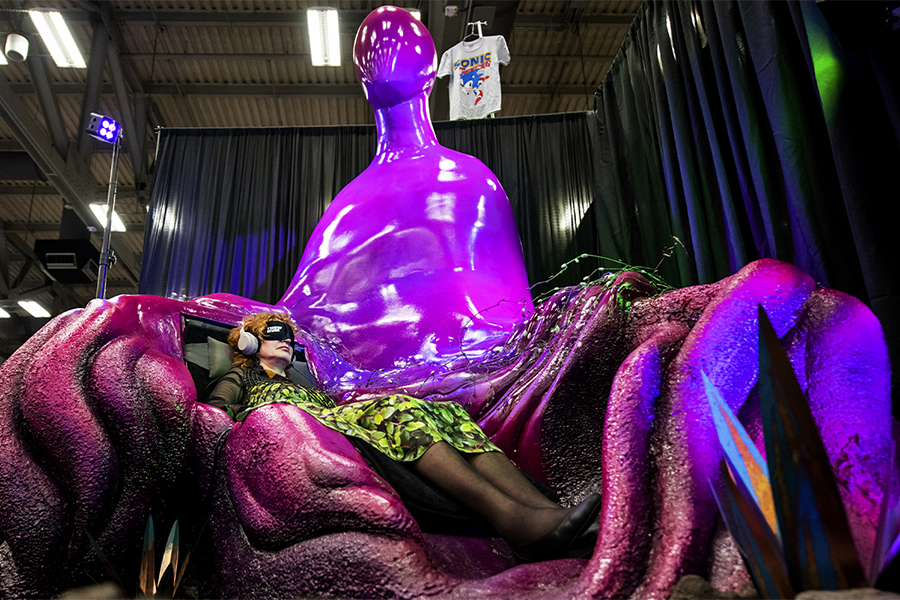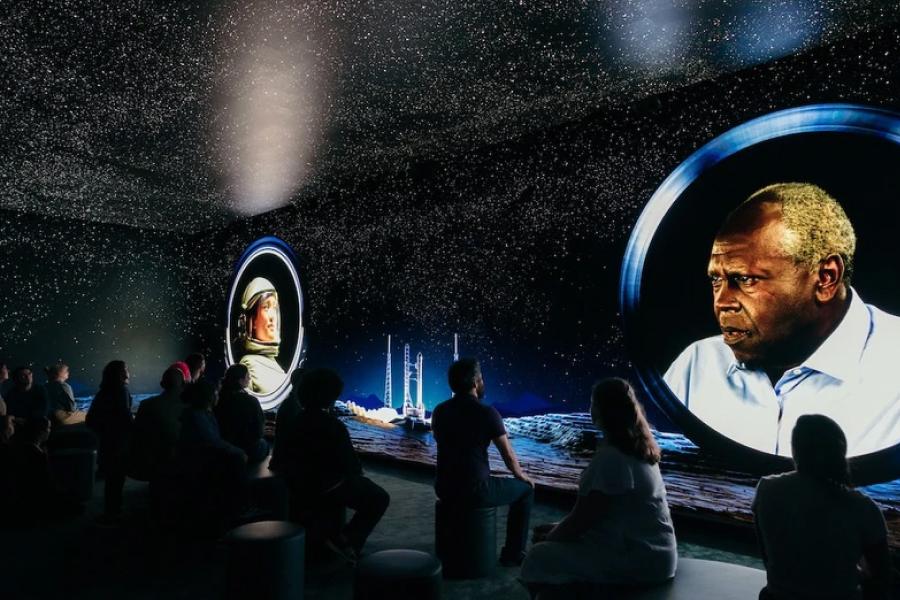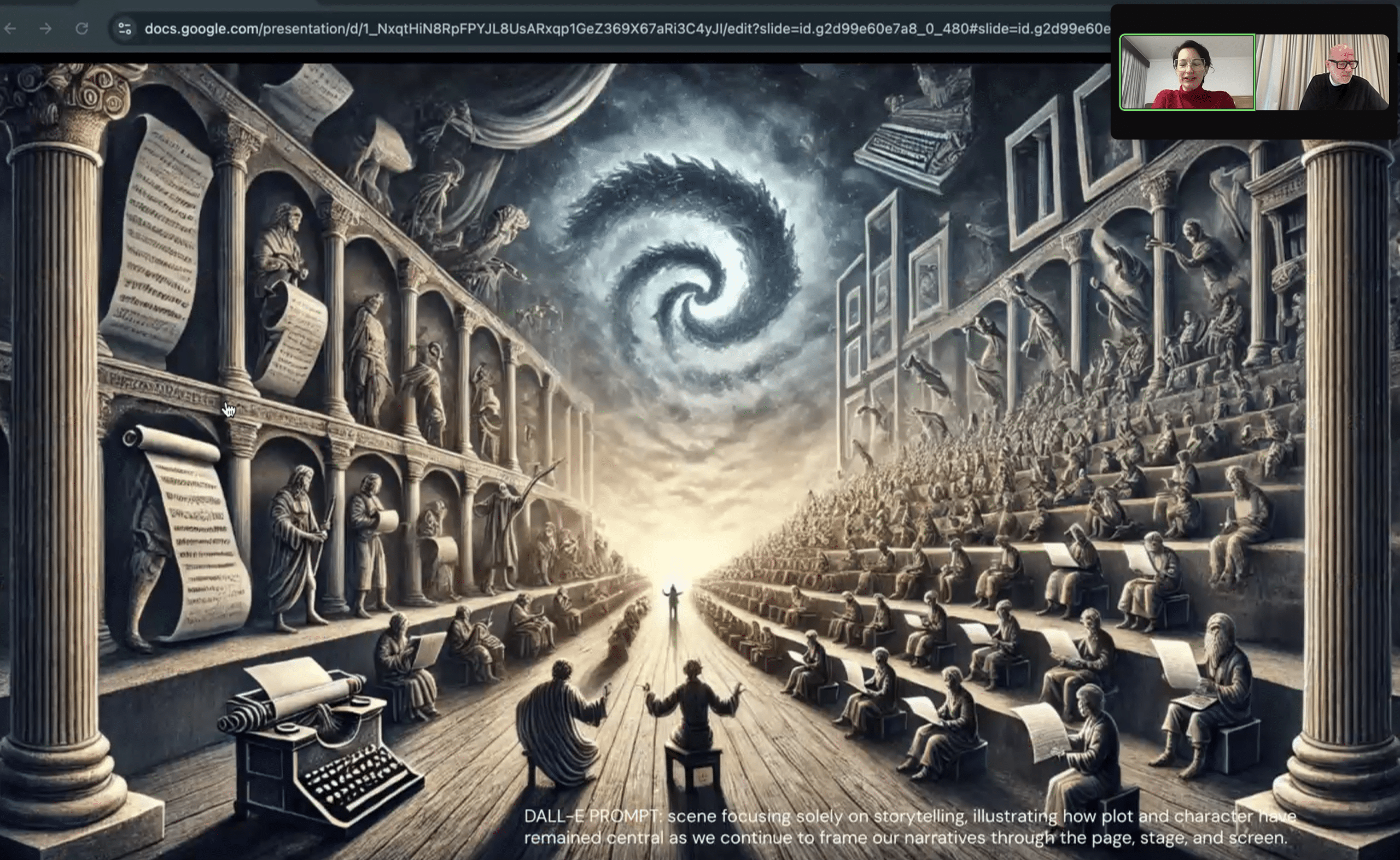How do you design experiences that tap into the senses to have greater impact – not only the traditional five senses, but also additional senses like interoception or propioception? How might you use emerging technology like VR, scent, or immersive audio to enhance your experiences? And how might sensory deprivation also have an impact?
This guide, part of our World Experience Glossary, gives an overview of how to design for the senses in your experiences. Links to relevant think pieces, WXO Campfire reports and experience case studies on the topic of creating sensory experiences are coming soon!
Unlocking the secrets of sensory design by considering all the senses opens up a world of possibilities beyond the traditional five senses. While most people are familiar with sight, sound, taste, touch, and smell, there are additional senses that can be harnessed to create truly immersive experiences. From designing for eyes-closed adventures to the rise of immersive audio, the potential to engage more deeply with our surroundings is vast. In this guide, we will explore how to design for the senses in innovative ways, including considerations for smell, touch, and accessibility. Join us as we delve into the world of sensory design and discover how to create environments that captivate and engage.
Understanding Multiple Senses
Beyond the Five Senses
While the traditional five senses—sight, sound, taste, touch, and smell—are well-known, there are other senses that play a crucial role in how we perceive the world. Proprioception, for example, is the sense of body position, allowing us to know where our limbs are without looking. Vestibular sense, or balance, helps us maintain equilibrium and navigate our environment. There’s also thermoception, the ability to sense temperature changes. When designing for the senses, considering these additional senses can create a more immersive and engaging experience. By acknowledging the full spectrum of human perception, designers can craft environments that not only captivate but also provide a richer, more nuanced interaction. Understanding these senses opens up new avenues for creativity and innovation in the field of sensory design. Additionally, sensory integration is crucial in perceiving objects and events within multisensory environments and atmospheres.
How to Design for the Senses
Designing for the senses involves more than just appealing to sight and sound. To create fully immersive environments, designers need to consider how to engage all available senses, with a particular focus on sensory features. Start by conducting thorough research to understand how different sensory inputs affect human behaviour and emotions. Use materials and textures that invite touch, and consider scents that can evoke specific memories or feelings. Incorporate ambient sounds and even silence strategically to enhance the overall experience. Lighting can be used not only to illuminate but also to set moods and create spatial dynamics. Additionally, consider the placement and interaction between various sensory elements to ensure they complement rather than overwhelm each other. By carefully balancing these factors, designers can create spaces that are not only functional but also deeply engaging and memorable.
Sensory Design Principles
Effective sensory design relies on a set of core principles that help guide the creation of immersive environments. First, balance is essential; each sensory element should enhance the experience without overpowering others. Cohesion is another key principle; the various sensory inputs should work together harmoniously to create a unified experience. Context is crucial as well; design elements should be appropriate for the environment and the intended audience. Adaptability ensures that the space can cater to different needs and preferences, making it accessible for all users. Finally, intentionality is vital; every sensory detail should have a clear purpose and contribute to the overall narrative or function of the space. By adhering to these principles, designers can create environments that are not only aesthetically pleasing but also emotionally and cognitively engaging. Additionally, uncovering cross sensory connections can further enhance the sensory design by triggering and amplifying other senses.
Designing for the Ears
Eyes-Closed Sensory Experience
Designing for eyes-closed experiences is a compelling way to engage the auditory senses. These experiences rely solely on sound to guide, entertain, or inform the user. Without visual cues, other senses, particularly hearing, become heightened. This makes the quality and placement of sound crucial. Spatial audio can simulate real-world acoustics, making the experience more immersive. Consider using ambient sounds, directional cues, and varying audio textures to create a rich soundscape. For instance, a guided meditation app might use natural sounds like flowing water or chirping birds to enhance relaxation. Similarly, audio tours can use spatial cues to guide the listener through a virtual environment. By focusing on the auditory sense, designers can create powerful, engaging experiences that captivate the user’s imagination and provide a unique way of perceiving the world.
Immersive Audio Techniques
Immersive audio techniques are pivotal for creating engaging auditory experiences. One effective method is binaural recording, which uses two microphones to create a 3D stereo sound sensation, mimicking how human ears perceive sound naturally. This technique is especially useful for VR environments and podcasts, offering a lifelike auditory experience. Another technique is spatial audio, which places sounds in a 360-degree space around the listener. This can be achieved through advanced audio processing software that manipulates sound waves to simulate direction and distance. Additionally, dynamic audio adjusts in real-time based on the listener’s actions or environment, making the experience interactive. For example, in gaming, sound effects change as the player moves through different settings. By incorporating these immersive audio techniques, designers can craft rich, multidimensional soundscapes that enhance the overall sensory experience and create a deeper connection with the user.
Emotional Impact of Sound
Sound has a profound emotional impact, capable of evoking strong feelings and memories. Music, in particular, can stir emotions ranging from joy to sorrow. For instance, a slow, melancholic tune can evoke sadness, while an upbeat, fast-paced rhythm can uplift and energise. Beyond music, ambient sounds like rain or waves crashing can induce relaxation and a sense of calm. In contrast, abrupt, loud noises can trigger stress or alertness. When designing auditory experiences, it’s crucial to consider the emotional responses you aim to elicit. Soundscapes can set the tone for an environment, influencing how users feel and interact within a space. For example, calming background music in a retail store can encourage browsing, while energetic tunes in a gym can boost motivation. By understanding the emotional impact of sound, designers can create experiences that resonate on a deeper, more personal level.
Engaging the Sense of Smell
How to Design for the Senses
Designing for the sense of smell involves understanding the powerful connection between scent and memory. Fragrances can instantly transport people to different times and places, making it a potent tool for creating immersive environments. Begin by identifying the emotions and memories you want to evoke. For instance, a bakery may use the scent of fresh bread to create a welcoming atmosphere. Scent diffusers can be strategically placed to ensure even distribution without overwhelming the space. Consider the intensity and duration of the scent to avoid olfactory fatigue, where the nose becomes desensitised to smells over time. Additionally, use high-quality, natural ingredients to ensure a pleasant and authentic experience. By thoughtfully integrating scent into your design, you can create environments that not only look and sound appealing but also engage users on a deeper, more emotional level.
Scent Branding
Scent branding is a strategic approach to using fragrance as part of a brand’s identity. It involves creating a signature scent that embodies the brand’s values and resonates with its target audience. This scent can be used in physical stores, offices, and even products to create a cohesive and memorable brand experience. For example, luxury hotels often use bespoke fragrances in their lobbies to evoke a sense of exclusivity and comfort. Retail stores might use specific scents to enhance the shopping experience, encouraging customers to linger longer. Scent branding can also extend to marketing materials, such as scented brochures or packaging, to create a multi-sensory brand encounter. By carefully selecting and consistently using a signature scent, brands can strengthen their identity, evoke desired emotions, and create lasting impressions that go beyond the visual and auditory senses.
Aromatherapy in Design
Aromatherapy in design leverages the therapeutic properties of essential oils to enhance well-being and mood within a space. Integrating aromatherapy involves selecting specific scents known for their calming, invigorating, or healing effects. For instance, lavender and chamomile are widely used for their relaxing and stress-reducing properties, making them ideal for spaces like spas, bedrooms, or meditation rooms. Citrus scents like lemon and orange can boost energy and focus, suitable for offices and study areas. To incorporate aromatherapy, use diffusers, scented candles, or even plant-based installations that release essential oils into the environment. It’s important to consider the intensity and duration of the scent to ensure it remains pleasant without becoming overpowering. By thoughtfully integrating aromatherapy into design, you can create environments that not only engage the sense of smell but also promote emotional and physical well-being, enhancing the overall user experience.
Enhancing the Sense of Touch
Tactile Feedback
Tactile feedback plays a crucial role in creating interactive and engaging experiences. It involves the use of textures, vibrations, and resistance to provide users with physical sensations that correspond to their actions. In digital design, haptic technology is commonly used to simulate touch, offering vibrations or pressure responses when users interact with a device. This can enhance user interfaces, making them more intuitive and satisfying to use. In physical spaces, tactile feedback can be incorporated through textured surfaces, varied materials, and responsive installations. For example, a museum exhibit might use textured panels to allow visitors to feel historical artefacts or natural elements. Similarly, retail stores can use different fabrics and materials to enhance the shopping experience. By integrating tactile feedback, designers can create more immersive and engaging environments that cater to the sense of touch, enriching the overall sensory experience.
Material Selection
Material selection is fundamental in enhancing the sense of touch within a design. The choice of materials can significantly influence the tactile experience and evoke different emotional responses. For instance, soft, plush fabrics like velvet and suede can create a sense of luxury and comfort, making them ideal for lounges and seating areas. In contrast, rougher textures like reclaimed wood or natural stone can add an element of ruggedness and authenticity, suitable for rustic or industrial settings. Smooth, sleek surfaces such as glass and polished metal can convey modernity and cleanliness, often used in contemporary designs. When selecting materials, it is also important to consider their durability and maintenance requirements to ensure they remain functional and aesthetically pleasing over time. By thoughtfully choosing and combining materials, designers can create rich, tactile environments that not only look appealing but also engage the sense of touch, enhancing the overall user experience.
How to Design for the Senses
Designing for the sense of touch requires a keen understanding of texture, temperature, and material properties. Start by identifying the tactile experiences you want to create. For instance, a cosy reading nook might benefit from soft, warm materials like wool and cotton, while a high-tech workspace could use sleek, cool surfaces like glass and metal. Consider the ergonomics of touch; ensure that surfaces are comfortable to interact with and that textures are pleasant to the touch. Use a variety of materials to create contrast and interest, but ensure they work harmoniously together. Incorporate elements like textured wall coverings, tactile fabrics, and interactive installations that respond to touch. Additionally, think about the temperature of materials; some, like metal, can feel cold, while others, like wood, can be warmer to the touch. By thoughtfully considering these aspects, you can create environments that are not only visually appealing but also richly tactile and engaging.
Accessibility and Sensory Design
Designing for All Abilities
Designing for all abilities involves creating environments that are inclusive and accessible to everyone, regardless of physical or sensory limitations. Start by considering the diverse needs of users. For those with visual impairments, incorporate tactile elements such as braille signage and textured flooring to aid navigation. Use high-contrast colours and large fonts to improve readability for individuals with low vision. For hearing-impaired users, ensure that visual cues and written instructions are available. Consider using vibrating alerts or visual signals to convey important information. In terms of mobility, ensure that spaces are wheelchair accessible with ramps, wide doorways, and unobstructed pathways. Incorporate multi-sensory elements to engage different senses and create a more inclusive experience. By thoughtfully designing for all abilities, you can create environments that are not only functional but also welcoming and engaging for everyone, enhancing the overall user experience and promoting inclusivity. Additionally, fostering sensory connections can significantly enhance meaning, memory, and a more human-centric experience.
Sensory Integration and Substitution Techniques
Sensory substitution techniques involve using one sense to compensate for the loss or impairment of another. These techniques can significantly enhance accessibility by providing alternative ways to experience and interact with the environment. For instance, tactile paving on sidewalks helps visually impaired individuals navigate public spaces using their sense of touch. Similarly, audio descriptions of visual content can aid those with vision impairments, providing detailed information about what is being seen. For individuals with hearing impairments, visual alerts and captions can replace auditory information. Advanced technologies like haptic feedback devices and wearable sensors can also provide sensory input through vibrations or pressure, offering new ways to experience surroundings. By integrating sensory substitution techniques, designers can create more inclusive environments that cater to a broader range of needs, ensuring that everyone can fully engage with and enjoy the space. Additionally, incorporating visual interest through textures and finishes can elevate a design and contribute to a multi-sensory experience, reinforcing the initial visual appeal.
How to Design for the Senses
Designing for the senses in an accessible manner requires a holistic approach that considers the diverse needs of all users. Begin by conducting an accessibility audit to identify potential barriers and areas for improvement. Incorporate multi-sensory elements to ensure that everyone can engage with the environment. For example, use tactile guides for navigation, auditory signals alongside visual cues, and contrasting colours to aid visibility. Ensure that information is available in multiple formats, such as braille, large print, and audio descriptions. Consider the ergonomics of interaction; ensure that controls and interfaces are within easy reach and simple to use for individuals with limited mobility. Use materials and textures that provide clear tactile feedback and are comfortable to touch. By integrating these considerations into your design, you can create inclusive environments that engage all senses, making spaces accessible and enjoyable for everyone.





